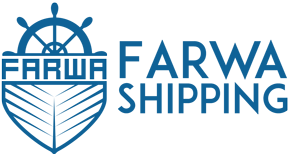
The cost of transportation is increasing, putting a strain on manufacturing costs. First, you’ll need to know the direct labor hourly rate (the labor cost per hour). Direct materials – cost of items that form an integral part of the finished product. Examples include wood in furniture, steel in automobile, water in bottled drink, fabric in shirt, etc. Usually financial statements refer to the balance sheet, income statement, statement of comprehensive income, statement of cash flows, and statement of stockholders’ equity. This account is a non-operating or “other” expense for the cost of borrowed money or other credit.
© Accounting Professor 2023. All rights reserved
If you can’t get enough raw materials, your production will suffer greatly, which could result in lost revenue or even bankruptcy for your company if it continues for too long. The increasing taxes are a big reason why manufacturing costs are rising. The tax rate has increased in many areas of the country, meaning that companies will cost more to manufacture their products.
- If a company wants to sell food in these countries, it must first test its products for these chemicals to comply with local laws.
- Once you identify the indirect costs, get detailed expense data for each of these overhead cost categories for a specific period, such as a month or a year.
- The shortage of skilled labor has led to increased wages across many industries, but not everyone has been able to keep up with these wage increases.
- Relevant cost – cost that will differ under alternative courses of action.
- Instead these expenses are reported on the income statement of the period in which they occur.
- Direct labor includes the production workers who assemble the boats and test them before they are shipped out.
Non-Manufacturing Overhead Costs

So for every pair of headphones you make, it will cost $120 in direct labor costs. Indirect manufacturing costs are considered fixed because they don’t change much yearly, no matter how much is produced or sold. Another example is if you made a t-shirt and had someone help you sew on the buttons, those wages would count towards your direct labor costs. Mastering the distinction between manufacturing and non-manufacturing costs is vital for effective managerial accounting. By understanding these cost classifications, you can make informed decisions that enhance financial performance and strategic planning.

More Regulations Require Companies To Spend Money- Manufacturing cost
Cost of sales represented the highest cost on the income statement at $26,600,000,000. The second highest cost on the income statement—selling and general and administrative expenses—totaled $22,800,000,000. These expenses are period costs, meaning they must be expensed in the period in which they are incurred. In addition to hiring Suspense Account more efficient workers, you can also reduce your manufacturing costs by reducing the number of steps required to complete a task or process. Doing this will save money on labor costs and materials used in production. Manufacturing costs are the expenses a company incurs to create its products.

Example of Non-Manufacturing Overhead Costs
Companies must pay more to get their products to their customers, affecting their bottom line. There are many reasons why manufacturing cost is essential, but one of the most important is that it helps you understand how much it costs to manufacture your product. To illustrate this, let’s say that we have a company that makes widgets, and we want to know how much it costs us per widget to produce them. We would review our records from last month and find our beginning inventory, then add up all purchases during the month and subtract anything we sold at the end of the month. If you’re an entrepreneur, it’s a good idea to understand the ins and outs of this topic. Manufacturing cost is one of the most important aspects of running a business, and it can mean the difference between success and failure.
- Employers must pay workers more if they work more than 8 hours per day or 40 hours per week.
- So if you’re buying your raw materials from a cheap, cheap material supplier, your product will likely break down before it can do its job correctly.
- Under the accrual basis of accounting, the matching is NOT based on the date that the expenses are paid.
- Indirect manufacturing costs cannot be traced directly to a single product but benefit multiple products or the entire company.
- This includes direct and indirect labor, such as plant managers and supervisors who oversee production processes but don’t perform any physical tasks themselves.
Example #2: Direct labor

This includes direct and indirect labor, such as plant managers and supervisors who oversee production processes but don’t perform any physical tasks themselves. Recall from other tutorials that variable costs change in proportion to production. For instance, in our example of Friends Company, the company purchases metal parts (raw material) to produce valves. The more valves are produced, the more parts Friends Company nonmanufacturing costs include has to acquire. Therefore, parts have a variable nature; the amount of raw materials bought and used changes in direct proportion to the amount of valves created.
What are Nonmanufacturing Overhead Costs?
You want to know how much it will cost you if you make 5,000 of these products. When inventory items are acquired or produced at varying costs, the company will need to make an assumption on how to flow the changing costs. It is likely that you will have to estimate the cost of these activities. Next, you will need to allocate the cost of the activities to the individual products.

Cost of goods sold is usually the largest expense on the income statement of a company selling products or goods. Cost of Goods Sold is a general ledger account under the perpetual inventory system. Note 1.43 “Business in Action 1.5” details the materials, labor, and manufacturing overhead at a company that has been producing boats since 1968. “Business in Action 2.5” details the materials, labor, and manufacturing overhead at a company that has been producing boats since 1968.
- Cost of goods sold is usually the largest expense on the income statement of a company selling products or goods.
- We use the term nonmanufacturing overhead costs or nonmanufacturing costs to mean the Selling, General & Administrative (SG&A) expenses and Interest Expense.
- Based on this information, the company’s management can add a markup to determine competitive selling prices for their products.
- Figure 2.3.1 shows examples of production activities at Custom Furniture Company for each of the three categories.
- These informed decisions help in maximizing productivity and profitability.
- Direct labor – cost of labor expended directly upon the materials to transform them into finished goods.
With a breakup of all the costs of manufacturing, management can decide whether it is more profitable to purchase certain parts or materials from a vendor or manufacture them in-house. For instance, if some raw materials are driving up costs, manufacturers can negotiate with other suppliers who may be willing to supply these materials at a lower cost. Fluctuation of costs is yet another challenge that makes it harder to calculate manufacturing costs accurately, according to Fabrizi. Next, calculate the value of the existing inventory if the manufacturing company already has a stock of materials from a previous period. Table 2.3.1 provides several examples of manufacturing costs at Custom Furniture Company by category. Activity-based costing (ABC) is a cost accounting method that attempts to assign costs to activities instead https://eserreklamcilik.com/our-services/ of to departments, as traditional cost accounting.
